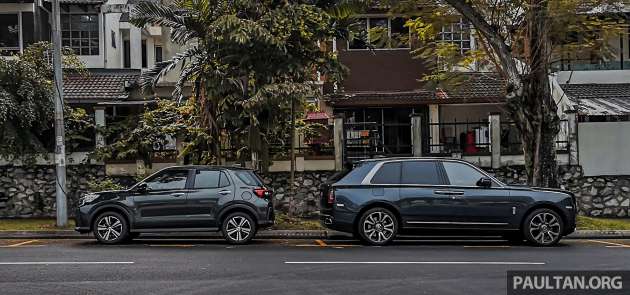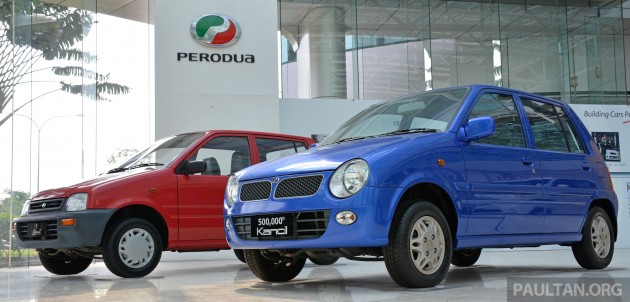The most significant news of the recent tabling of Budget 2025 has to be the impending end to blanket subsidies for RON 95 petrol, which will be replaced by a targeted version that will come into place from mid-2025. After subsidy rationalisation for diesel was implemented in June, it was always a matter of when and not if RON 95 petrol would follow. Now we know when.
Prime minister Datuk Seri Anwar Ibrahim said that the T15 (a new term that means the top 15% earners) and foreigners will soon have to pay market price for petrol, while 85% of the rakyat will continue to enjoy subsidised RON 95.
Anwar, who is also finance minister, used maha kaya to describe the T15 in the budget, but this actually isn’t the first time he’s using the term. Perhaps there’s no need for a big tech company, mansion or a fleet of supercars to be classified as ‘super rich’ in Malaysia – we’ll soon find out if a RM15k household income is enough to join this rarefied club.
Aside from the definition of T15, the Madani government will also have to work out the mechanism for this ‘once in a generation’ move, which has to be the trickiest part. Will we have two RON95 prices at the pumps – market price for the T15 and RM2.05 per litre for the masses – or will it be one flat market rate, with cash assistance given to ‘reimburse’ the target group?
There’s no 100% foolproof way, but professor of economics at UKM-Graduate School of Business Tan Sri Dr Noor Azlan Ghazali opines that there shouldn’t be two-tier pricing at the pumps.
“In my opinion, don’t disturb the price – a fair price, even if it’s high. If there are affected groups, help them in other ways, not by putting two different prices at the pump,” he said, adding that if the government wants to provide subsidy for RON95 to targeted groups, it should be given according to vehicle type and not based on classification of household or individual incomes.
“It’s like highway toll payment that follows the class of car. If a rich man uses a (Perodua) Kancil, he will qualify for the subsidy, because he’s then using very little fuel. I think that generally, richer individuals will use vehicles with larger capacity engines. Of course, in every classification there’s leakage, but it can be reduced,” Noor Azlan said.
This mention of ‘Kancil’ (throwback post here) reminds me of the statement by former international trade and industry minister Datuk Seri Mohamed Azmin Ali, who said “those with a BMW cannot receive the same subsidies as those with Kancil,” when pushing for a targeted fuel subsidy system back in 2022. Yes, this topic is hot but far from fresh.
As simplistic as it sounds, surely you don’t know of many rich people driving around in Peroduas? And would a rich man go out of the way to save RM1 per litre (for example) by driving an Axia to the petrol station, filling it to the brim, and then transferring the RM2.05 per litre liquid gold to his BMW? The good prof’s suggestion might work, you know.
He continued to make sense when talking about the government’s efforts to classify us according to income. “I have a bit of a worry that people will start thinking of the T15 as maha kaya. For example, if you’re in Kelantan, with a household income of RM7,759, you’re already a T15. But if you come to KL, RM7,000 is just about enough to survive (baru cukup-cukup hendak meneruskan kehidupan), correct?”
“So when using ‘T15’ as one of the enablers for policy change, in my opinion, if not careful, it will be prone to mistakes in targeting,” he said.
What do you think of the professor’s suggestion that subsidy should be given based on the type of vehicle, as opposed to income? The tricky thing about this method is where to draw the line between a car that deserves subsidy, and a fancy/luxury car that doesn’t. If it’s based on the good old ‘cc’ method, premium brands have been using downsized turbo engines for some time now. If it’s according to brand, there will be endless arguments, and there’s also the issue of old cars with a premium badge.
Looking to sell your car? Sell it with Carro.






AI-generated Summary ✨
The comments predominantly support the idea of implementing vehicle-based fuel subsidies rather than income-based schemes, emphasizing fairness and practicality by linking subsidies to engine size, car value, or engine power. Several commenters suggest tweaking fuel pumps to allocate subsidies appropriately, for example, based on fuel volume or horsepower, to prevent small-volume users like motorcycles from being overcharged. There is criticism of the current subsidy system, with many arguing it encourages smuggling and disincentivizes energy efficiency, especially for big, luxurious, or high-powered vehicles. Some suggest that the government should focus on taxing more wealthy individuals or increasing fuel prices gradually, while others propose data-driven approaches like registration and RFID systems. Overall, sentiments favor a more targeted, fair, and efficient subsidy system aligned with vehicle specifications rather than income levels.